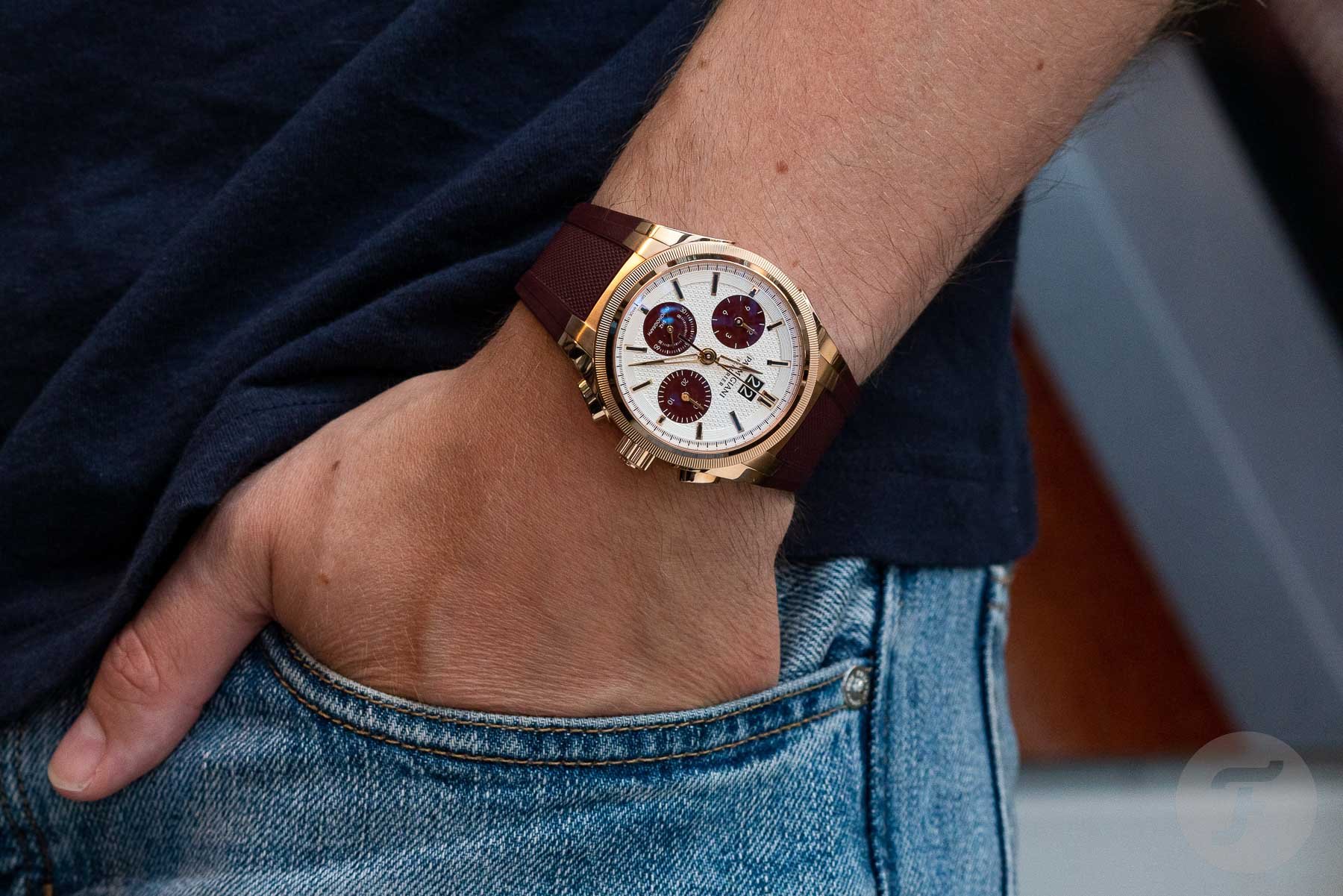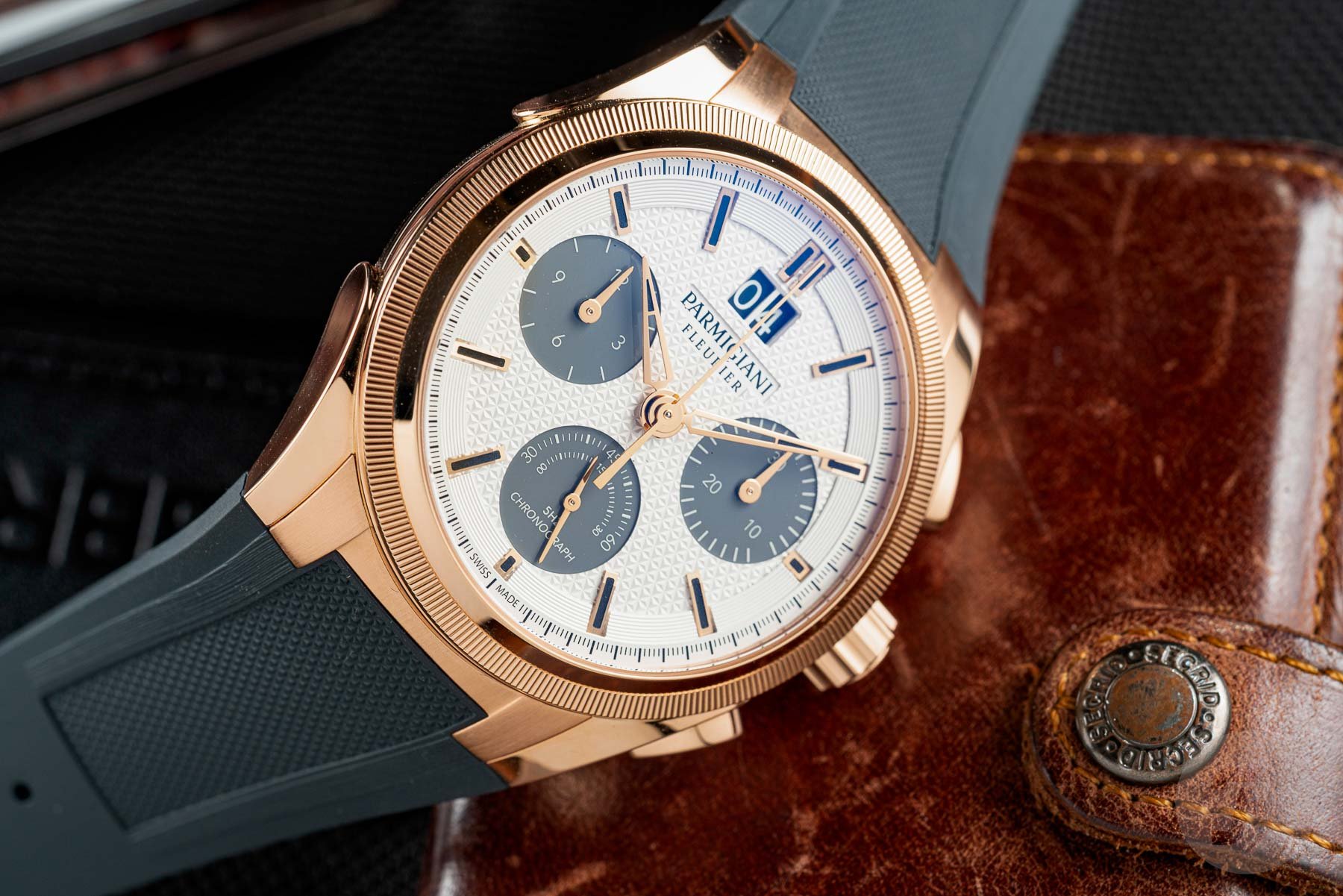Parmigiani Fleurier’s Tonda GT 5Hz Integrated Chronograph In Rose Gold — Yes, 5Hz!
Parmigiani Fleurier’s Tonda GT may have debuted only in 2020, but it turns out to be an integral precursor to the overnight success of the Tonda PF collection. The Swiss independent watchmaker’s sports-luxe line is now in its second generation. Among the offspring are the Tonda GT “panda” chronographs in 18K rose gold featuring a super engine — a manufacture movement with a high-frequency COSC-certified integrated chronograph.
The sports-watch vibes
The “panda” Tonda GT comes in several variants in both stainless steel and rose gold. I must admit the panda dial threw me off on first impression. Even though it was just a tweak from the first generation, somehow, I couldn’t quite reconcile in my head that it was a watch from Parmigiani. It was not the kind of old-school elegance with which I had always associated the brand. It was somewhat more approachable, or “everyday classic” if you will. The GT panda struck me as a lot sportier in a masculine way.
The mind trick
As my brain was still recalibrating for this new dimension of the Tonda chronographs, another surprise made my eyes pop. I had (lazily, or customarily) made a casual assumption that the difference between the steel and rose gold versions was only the case materials. The Tonda GT chronographs all have the same panda face, don’t they? Well, actually no. Not when you line them up for a proper glance!
A different beast
Immediately, you can tell the Tonda GT steel and the gold versions are very different animals. Not only do their dials deviate from each other, their engines are in two separate leagues. In fact, the very few features they have in common are the chronograph discs, the chapter ring, and the rubber straps. OK, the black lume too. But here is when we pick up where we left off last time in my review of the Tonda GT Chronograph Steel. The steel version boasts an annual calendar chronograph, which is a very rare mechanism and typically an upscale offering, in a compelling package.
Ultra-high frequency
When it comes to the Tonda GT Chronograph in rose gold, as the dial reveals, there is no annual calendar. The big date remains, but it has swapped places with the Parmigiani Fleurier wordmark below 12 o’clock. The chronograph sub-dials are aligned horizontally, while the small seconds indicator sits above 6 o’clock. With the two semi-circular tracks going around the top half of the seconds register, the bottom half is emblazoned with “5Hz Chronograph”.
The super engine
Now, this is where things get interesting. Parmigiani is not letting you wonder about what is ticking inside the rose gold version. At its heart is the caliber PF071, a high-frequency integrated chronograph produced by Parmigiani’s sister company Vaucher. It is common knowledge in the industry that this Fleurier-based high-end manufacture supplies most of Richard Mille’s chronographs. So when Vaucher builds an in-house 5Hz integrated column-wheel chronograph for the Tonda GT, we take notice.
Integrated chronographs
An integrated chronograph is a highly sophisticated mechanism. It is conceived from the very start to incorporate all the chronograph parts and gears into the base movement, hence “integrated”. Its construction requires meticulous engineering of the components and painstaking adjustment of the functions. An integrated chronograph has an entirely different architecture compared to a modular chronograph. The latter, as evidenced by the name, is a chronograph module mounted onto a ready-made base movement. Modular chronographs are commonly used due to their relative efficiency, simplicity, and cost benefits, but they cannot beat integrated chronographs in precision and performance. You can refer to our other article for mechanical chronographs 101 here.
A fine pedigree
As for the caliber PF071, this integrated chronograph uses a column-wheel system with a vertical clutch and a cross-through bridge. Such technical refinements mean the running of the gears is inherently in tune, more stable, and superbly efficient. This automatic movement can provide a power reserve of 65 hours, not to mention higher accuracy. The oscillation frequency of the balance at 36,000vph (5Hz) is a rare feat in modern chronographs. As such, the stopwatch can measure intervals up to 10ths of a second. The PF071 is also COSC chronometer-certified. It goes without saying, each of its 331 components is meticulously finished and decorated. If you want to delve deeper into this highbrow mechanism, feel free to refer directly to Vaucher’s rationale here. And to admire the mechanical finesse, turn the watch over to the case back, where a skeletonized PF rose gold rotor is also on full display.
The Tonda GT Integrated Chronograph comes in an 18K rose gold case that measures 42mm in diameter and 14.3mm in height. Both the oxblood red and medium gray versions are priced at CHF 43,100 including Swiss VAT.
For more details, visit the official Parmigiani Fleurier website.







